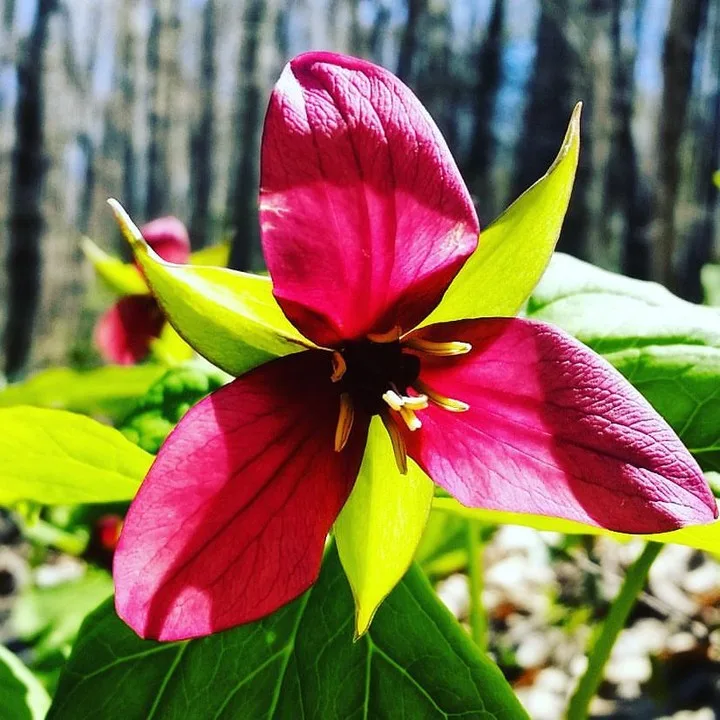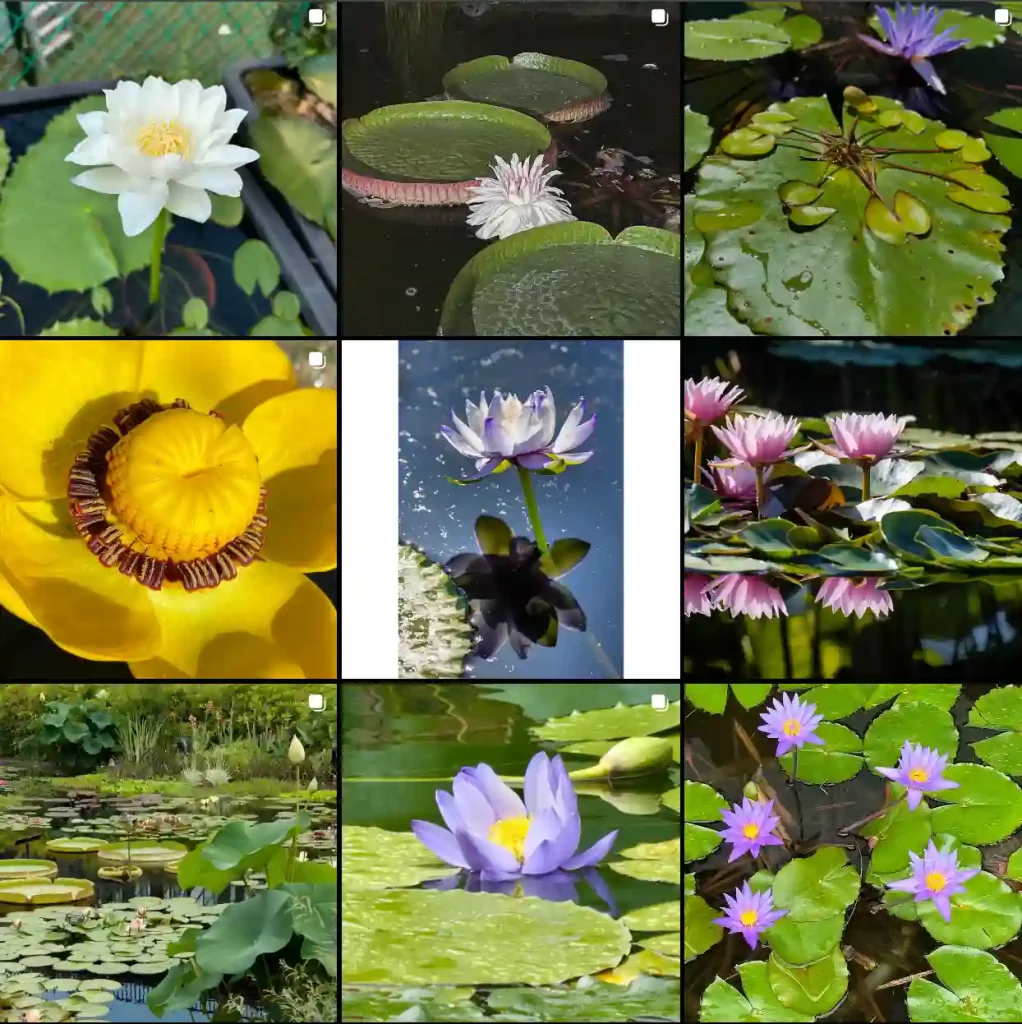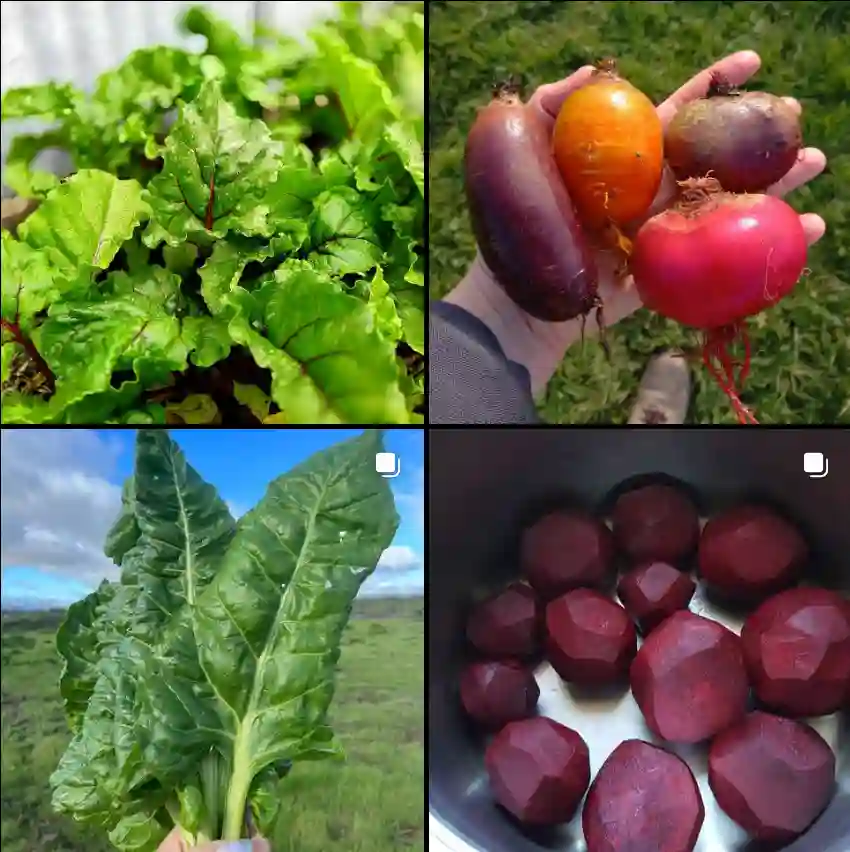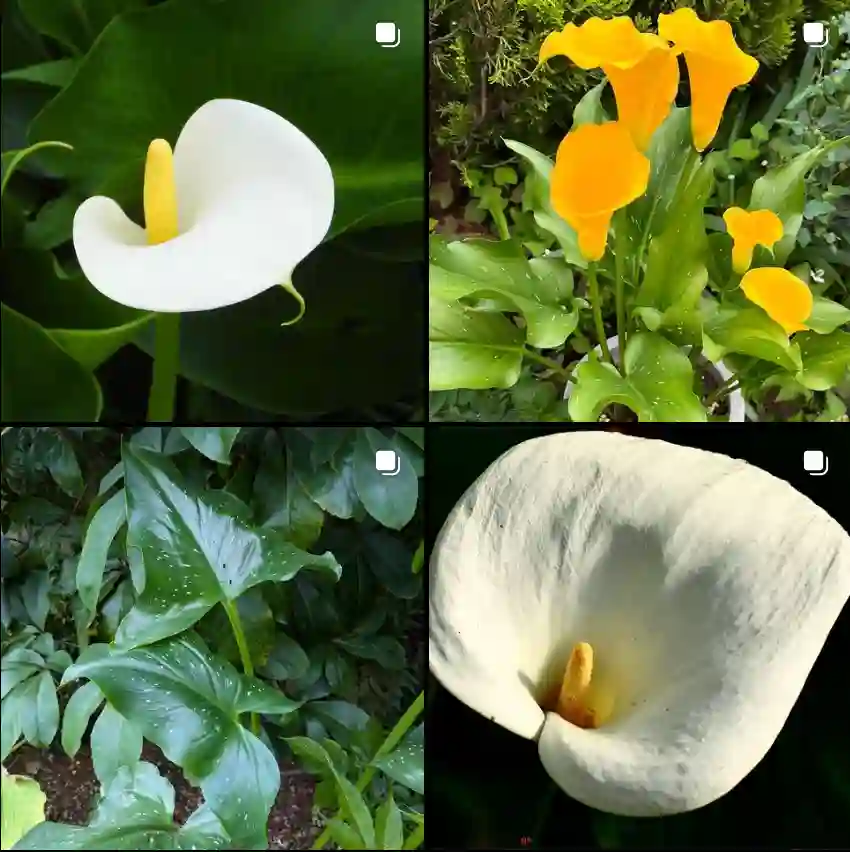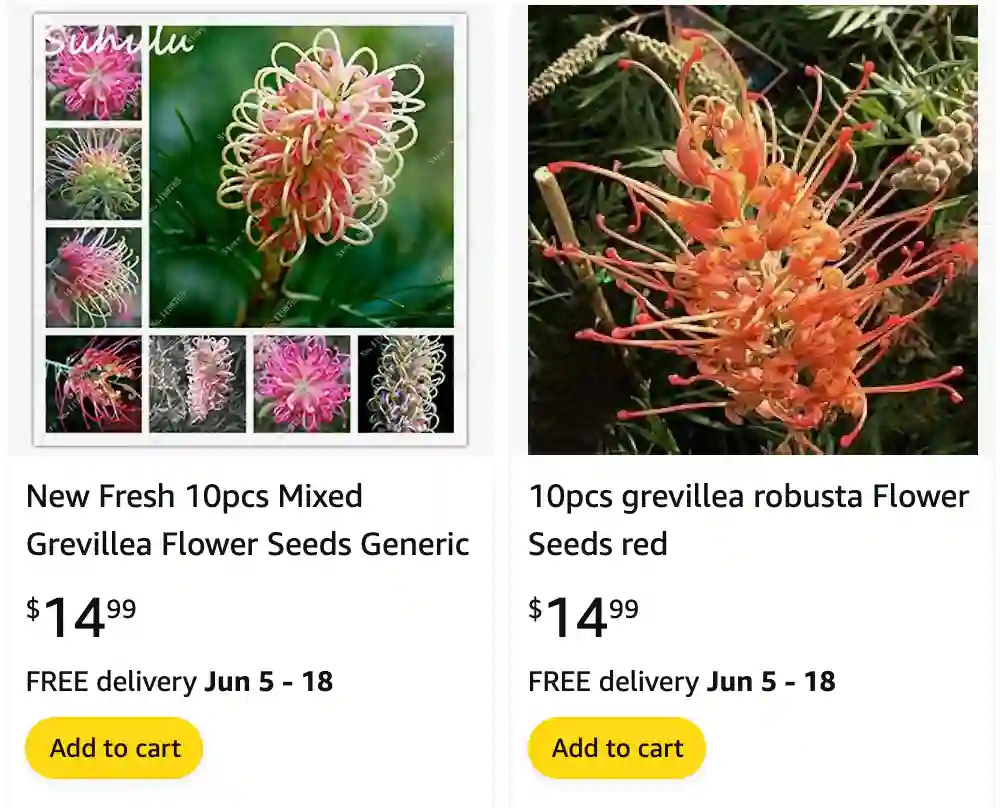
February 26 – Grevillea
"Grevillea, the spider flower, represents February 26."
Grevillea symbolizes innovation and resourcefulness. You have a creative mind and a unique approach to solving problems, inspiring those around you.
What is a grevillea?
The genus Grevillea has always fascinated me with its unique, almost otherworldly flowers and its versatility in various landscapes. As a plant enthusiast, I’ve spent considerable time exploring this genus, which belongs to the family Proteaceae—a family known for its striking diversity and ecological significance.
Grevillea species are native to Australia, with a few extending into nearby regions like New Guinea and Indonesia. They are celebrated for their vibrant flowers, ranging from soft creams and yellows to fiery reds and oranges. What makes them stand out for me is their adaptability. Whether I’m designing a drought-tolerant garden or looking to attract pollinators, Grevillea is often my go-to.
The flowers are not just eye-catching but also ecologically important. They produce nectar that attracts birds, bees, and even small mammals. Watching honeyeaters dart around my Grevillea robusta (commonly known as the silky oak) is always a treat.
Grevillea species
- Grevillea acacioides C.A.Gardner ex McGill.
- Grevillea acanthifolia A.Cunn.
- Grevillea acerata McGill.
- Grevillea acrobotrya Meisn.
- Grevillea acropogon Makinson
- Grevillea acuaria F.Muell. ex Benth.
- Grevillea adenotricha McGill.
- Grevillea agrifolia A.Cunn. ex R.Br.
- Grevillea albiflora C.T.White
- Grevillea alpina Lindl.
- Grevillea alpivaga Gand.
- Grevillea althoferorum Olde & Marriott
- Grevillea amplexans F.Muell. ex Benth.
- Grevillea anethifolia R.Br.
- Grevillea aneura McGill.
- Grevillea angulata R.Br.
- Grevillea angustiloba (F.Muell.) Downing
- Grevillea annulifera F.Muell.
- Grevillea aquifolium Lindl.
- Grevillea arenaria R.Br.
- Grevillea argyrophylla Meisn.
- Grevillea armigera Meisn.
- Grevillea asparagoides Meisn.
- Grevillea aspera R.Br.
- Grevillea aspleniifolia Knight
- Grevillea asteriscosa Diels
- Grevillea aurea Olde & Marriott
- Grevillea australis R.Br.
- Grevillea banksii R.Br.
- Grevillea banyabba Olde & Marriott
- Grevillea barklyana F.Muell. ex Benth.
- Grevillea batrachioides F.Muell. ex McGill.
- Grevillea baueri R.Br.
- Grevillea baxteri R.Br.
- Grevillea beadleana McGill.
- Grevillea beardiana McGill.
- Grevillea bedggoodiana J.H.Willis ex McGill.
- Grevillea bemboka Stajsic & Molyneux
- Grevillea benthamiana McGill.
- Grevillea berryana Ewart & Jean White
- Grevillea biformis Meisn.
- Grevillea bipinnatifida R.Br.
- Grevillea biternata Meisn.
- Grevillea brachystachya Meisn.
- Grevillea brachystylis Meisn.
- Grevillea bracteosa Meisn.
- Grevillea brevifolia F.Muell. ex Benth.
- Grevillea brevis Olde & Marriott
- Grevillea bronweniae Keighery
- Grevillea bundera (Keighery) Olde & Keighery
- Grevillea burrowa Molyneux & Forrester
- Grevillea buxifolia (Sm.) R.Br.
- Grevillea byrnesii McGill.
- Grevillea cagiana McGill.
- Grevillea calcicola A.S.George
- Grevillea caleyi R.Br.
- Grevillea calliantha Makinson & Olde
- Grevillea callichlaena Molyneux & Stajsic
- Grevillea candelabroides C.A.Gardner
- Grevillea candicans C.A.Gardner
- Grevillea candolleana Meisn.
- Grevillea capitellata Meisn.
- Grevillea celata Molyneux
- Grevillea centristigma (McGill.) Keighery
- Grevillea ceratocarpa Diels
- Grevillea cheilocarpa Makinson
- Grevillea christiniae McGill.
- Grevillea chrysophaea F.Muell. ex Meisn.
- Grevillea cirsiifolia Meisn.
- Grevillea coccinea Meisn.
- Grevillea commutata F.Muell.
- Grevillea concinna R.Br.
- Grevillea confertifolia F.Muell.
- Grevillea cooljarloo Keighery & Olde
- Grevillea corrugata Olde & Marriott
- Grevillea costata C.A.Gardner ex A.S.George
- Grevillea crassifolia Domin
- Grevillea cravenii Makinson
- Grevillea crithmifolia R.Br.
- Grevillea crowleyae Olde & Marriott
- Grevillea cunninghamii R.Br.
- Grevillea cyranostigma McGill.
- Grevillea decipiens McGill.
- Grevillea decora Domin
- Grevillea decurrens Ewart
- Grevillea deflexa F.Muell.
- Grevillea delta (McGill.) Olde & Marriott
- Grevillea depauperata R.Br.
- Grevillea deplanchei Brongn. & Gris
- Grevillea didymobotrya Meisn.
- Grevillea dielsiana C.A.Gardner
- Grevillea diffusa Sieber ex Spreng.
- Grevillea dilatata (R.Br.) Downing
- Grevillea dimidiata F.Muell.
- Grevillea diminuta L.A.S.Johnson
- Grevillea dimorpha F.Muell.
- Grevillea disjuncta F.Muell.
- Grevillea dissectifolia (McGill.) Olde
- Grevillea divaricata R.Br.
- Grevillea diversifolia Meisn.
- Grevillea dolichopoda (McGill.) Olde & Marriott
- Grevillea donaldiana Kenneally
- Grevillea drummondii Meisn.
- Grevillea dryandri R.Br.
- Grevillea dryandroides C.A.Gardner
- Grevillea dryophylla N.A.Wakef.
- Grevillea dunlopii Makinson
- Grevillea edelfeltii F.Muell.
- Grevillea elbertii Sleumer
- Grevillea elongata Olde & Marriott
- Grevillea endlicheriana Meisn.
- Grevillea epicroca Stajsic & Molyneux
- Grevillea erectiloba F.Muell.
- Grevillea eremophila (Diels) Olde & Marriott
- Grevillea erinacea Meisn.
- Grevillea eriobotrya F.Muell.
- Grevillea eriostachya Lindl.
- Grevillea eryngioides Benth.
- Grevillea erythroclada W.Fitzg.
- Grevillea evanescens Olde & Marriott
- Grevillea evansiana MacKee
- Grevillea excelsior Diels
- Grevillea exposita Olde & Marriott
- Grevillea extorris S.Moore
- Grevillea exul Lindl.
- Grevillea fasciculata R.Br.
- Grevillea fastigiata Olde & Marriott
- Grevillea fililoba (McGill.) Olde & Marriott
- Grevillea fistulosa A.S.George
- Grevillea flexuosa Meisn.
- Grevillea floribunda R.Br.
- Grevillea florida (McGill.) Makinson
- Grevillea floripendula R.V.Sm.
- Grevillea formosa McGill.
- Grevillea fulgens C.A.Gardner
- Grevillea fuscolutea Keighery
- Grevillea gariwerdensis Makinson
- Grevillea × gaudichaudii R.Br. ex Gaudich.
- Grevillea georgeana McGill.
- Grevillea gillingarra Olde & Keighery
- Grevillea gillivrayi Hook.
- Grevillea gilmourii Olde
- Grevillea glabrescens Olde & Marriott
- Grevillea glabrilimba (Olde & Marriott) Olde
- Grevillea glauca Knight
- Grevillea globosa C.A.Gardner
- Grevillea glossadenia McGill.
- Grevillea goodii R.Br.
- Grevillea gordoniana C.A.Gardner
- Grevillea granulifera (McGill.) Olde & Marriott
- Grevillea granulosa McGill.
- Grevillea guthrieana Olde & Marriott
- Grevillea hakeoides Meisn.
- Grevillea halmaturina (Tate) Tate
- Grevillea haplantha F.Muell. ex Benth.
- Grevillea heliosperma R.Br.
- Grevillea helmsiae F.M.Bailey
- Grevillea hilliana F.Muell.
- Grevillea hirtella (Benth.) Olde & Marriott
- Grevillea hislopii Olde & Marriott
- Grevillea hockingsii Molyneux & Olde
- Grevillea hodgei Olde & Marriott
- Grevillea hookeriana Meisn.
- Grevillea hortiorum Olde
- Grevillea huegelii Meisn.
- Grevillea humifusa Olde & Marriott
- Grevillea humilis Makinson
- Grevillea hystrix R.W.Davis
- Grevillea iaspicula McGill.
- Grevillea ilicifolia (R.Br.) R.Br.
- Grevillea imberbis Makinson
- Grevillea inconspicua Diels
- Grevillea incrassata Diels
- Grevillea incurva (Diels) Olde & Marriott
- Grevillea infecunda McGill.
- Grevillea infundibularis A.S.George
- Grevillea insignis Kippist ex Meisn.
- Grevillea integrifolia Meisn.
- Grevillea intricata Meisn.
- Grevillea involucrata A.S.George
- Grevillea irrasa Makinson
- Grevillea jephcottii J.H.Willis
- Grevillea johnsonii McGill.
- Grevillea juncifolia Hook.
- Grevillea juniperina R.Br.
- Grevillea kedumbensis (McGill.) Olde & Marriott
- Grevillea kenneallyi McGill.
- Grevillea kennedyana F.Muell.
- Grevillea kirkalocka Olde & Marriott
- Grevillea lanigera A.Cunn. ex R.Br.
- Grevillea latifolia C.A.Gardner
- Grevillea laurifolia Sieber ex Spreng.
- Grevillea lavandulacea Schltdl.
- Grevillea lawrenceana Bosse
- Grevillea leiophylla F.Muell. ex Benth.
- Grevillea leptobotrys Meisn.
- Grevillea leptopoda McGill.
- Grevillea leucoclada McGill.
- Grevillea leucopteris Meisn.
- Grevillea levis Olde & Marriott
- Grevillea linearifolia (Cav.) Druce
- Grevillea linsmithii McGill.
- Grevillea lissopleura McGill.
- Grevillea longicuspis McGill.
- Grevillea longifolia R.Br.
- Grevillea longistyla Hook.
- Grevillea lullfitzii McGill.
- Grevillea maccutcheonii Keighery & Cranfield
- Grevillea macleayana (McGill.) Olde & Marriott
- Grevillea macmillanii Guillaumin
- Grevillea maherae Makinson & M.D.Barrett
- Grevillea makinsonii McGill.
- Grevillea manglesii Pépin
- Grevillea manglesioides Meisn.
- Grevillea marriottii Olde
- Grevillea masonii Olde & Marriott
- Grevillea maxwellii McGill.
- Grevillea mcgillivrayi I.M.Turner
- Grevillea meisneri Montrouz.
- Grevillea merceri Olde & Marriott
- Grevillea metamorpha Makinson
- Grevillea micrantha Meisn.
- Grevillea microstegia Molyneux
- Grevillea microstyla M.D.Barrett & Makinson
- Grevillea milleriana Olde
- Grevillea mimosoides R.Br.
- Grevillea miniata W.Fitzg.
- Grevillea minutiflora McGill.
- Grevillea miqueliana F.Muell.
- Grevillea mollis Olde & Molyneux
- Grevillea molyneuxii McGill.
- Grevillea mondorensis Majourau & Pillon
- Grevillea monslacana Molyneux & Stajsic
- Grevillea montana R.Br.
- Grevillea monticola Meisn.
- Grevillea montis-cole R.V.Sm.
- Grevillea mucronulata R.Br.
- Grevillea muelleri Benth.
- Grevillea murex McGill.
- Grevillea muricata J.M.Black
- Grevillea myosodes McGill.
- Grevillea nana C.A.Gardner
- Grevillea nematophylla F.Muell.
- Grevillea neodissecta I.M.Turner
- Grevillea neorigida I.M.Turner
- Grevillea nepwiensis Majourau & Pillon
- Grevillea neurophylla Gand.
- Grevillea newbeyi McGill.
- Grevillea nivea Olde & Marriott
- Grevillea nudiflora Meisn.
- Grevillea obliquistigma C.A.Gardner
- Grevillea obtecta Molyneux
- Grevillea obtusiflora R.Br.
- Grevillea obtusifolia Meisn.
- Grevillea occidentalis R.Br.
- Grevillea oldei McGill.
- Grevillea oleoides Sieber
- Grevillea oligantha F.Muell.
- Grevillea oligomera (McGill.) Olde & Marriott
- Grevillea olivacea A.S.George
- Grevillea oncogyne Diels
- Grevillea oxyantha Makinson
- Grevillea pachylostyla (McGill.) Olde & Marriott
- Grevillea paniculata Meisn.
- Grevillea papillosa (McGill.) Olde & Marriott
- Grevillea papuana Diels
- Grevillea paradoxa F.Muell.
- Grevillea parallela Knight
- Grevillea parallelinervis Carrick
- Grevillea parviflora R.Br.
- Grevillea parvula Molyneux & Stajsic
- Grevillea patentiloba F.Muell.
- Grevillea patulifolia Gand.
- Grevillea pauciflora R.Br.
- Grevillea pectinata R.Br.
- Grevillea petrophiloides Meisn.
- Grevillea phanerophlebia Diels
- Grevillea phillipsiana McGill.
- Grevillea phylicoides R.Br.
- Grevillea pieroniae Olde
- Grevillea pilosa A.S.George
- Grevillea pilulifera (Lindl.) Druce
- Grevillea pimeleoides W.Fitzg.
- Grevillea pinaster Meisn.
- Grevillea pinifolia Meisn.
- Grevillea pityophylla F.Muell.
- Grevillea pluricaulis (McGill.) Olde & Marriott
- Grevillea plurijuga F.Muell.
- Grevillea polyacida McGill.
- Grevillea polybotrya Meisn.
- Grevillea polybractea H.B.Will.
- Grevillea polychroma (Molyneux & Stajsic) Molyneux & Stajsic
- Grevillea prasina McGill.
- Grevillea preissii Meisn.
- Grevillea prominens Olde & Marriott
- Grevillea prostrata C.A.Gardner & A.S.George
- Grevillea psilantha McGill.
- Grevillea pteridifolia Knight
- Grevillea pterosperma F.Muell.
- Grevillea pulchella (R.Br.) Meisn.
- Grevillea punctata Olde & Marriott
- Grevillea pungens R.Br.
- Grevillea punicea R.Br.
- Grevillea pyramidalis A.Cunn. ex R.Br.
- Grevillea pythara Olde & Marriott
- Grevillea quadricauda Olde & Marriott
- Grevillea quercifolia R.Br.
- Grevillea quinquenervis J.M.Black
- Grevillea ramosissima Meisn.
- Grevillea rara Olde & Marriott
- Grevillea raybrownii Olde & Marriott
- Grevillea refracta R.Br.
- Grevillea renwickiana F.Muell.
- Grevillea repens F.Muell. ex Meisn.
- Grevillea reptans Makinson
- Grevillea rhizomatosa Olde & Marriott
- Grevillea rhyolitica Makinson
- Grevillea ripicola A.S.George
- Grevillea rivularis L.A.S.Johnson & McGill.
- Grevillea robusta A.Cunn. ex R.Br. Plant FAQs: Grevillea Robusta – Silky Oak
- Grevillea rogersoniana C.A.Gardner
- Grevillea rosieri McGill.
- Grevillea rosmarinifolia A.Cunn.
- Grevillea roycei McGill.
- Grevillea rubicunda S.Moore
- Grevillea rubiginosa Brongn. & Gris
- Grevillea rudis Meisn.
- Grevillea saccata Benth.
- Grevillea sarissa S.Moore
- Grevillea saxicola S.J.Dillon
- Grevillea scabra Meisn.
- Grevillea scabrida C.A.Gardner
- Grevillea scapigera A.S.George
- Grevillea scortechinii (F.Muell. ex Scort.) F.Muell.
- Grevillea secunda McGill.
- Grevillea sericea (Sm.) R.Br.
- Grevillea sessilis C.T.White & W.D.Francis
- Grevillea shiressii Blakely
- Grevillea shuttleworthiana Meisn.
- Grevillea singuliflora F.Muell.
- Grevillea sinuata Brongn. & Gris
- Grevillea sparsiflora F.Muell.
- Grevillea speciosa (Knight) McGill.
- Grevillea speckiana Olde
- Grevillea sphacelata R.Br.
- Grevillea spinosa McGill.
- Grevillea spinosissima McGill.
- Grevillea squiresiae Olde & Marriott
- Grevillea steiglitziana N.A.Wakef.
- Grevillea stenobotrya F.Muell.
- Grevillea stenogyne (Benth.) Makinson
- Grevillea stenomera F.Muell.
- Grevillea stenostachya C.A.Gardner
- Grevillea striata R.Br.
- Grevillea subterlineata Makinson
- Grevillea subtiliflora McGill.
- Grevillea sulcata C.A.Gardner ex Olde & Marriott
- Grevillea synapheae R.Br.
- Grevillea tenuiflora Meisn.
- Grevillea tenuiloba C.A.Gardner
- Grevillea teretifolia Meisn.
- Grevillea tesselata Olde
- Grevillea tetragonoloba Meisn.
- Grevillea tetrapleura McGill.
- Grevillea thelemanniana Hügel ex Lindl.
- Grevillea thyrsoides Meisn.
- Grevillea trachytheca F.Muell.
- Grevillea treueriana F.Muell.
- Grevillea trichantha Olde
- Grevillea trifida (R.Br.) Meisn.
- Grevillea triloba Meisn.
- Grevillea tripartita Meisn.
- Grevillea triternata R.Br.
- Grevillea umbellulata Meisn.
- Grevillea uncinulata Diels
- Grevillea uniformis (McGill.) Olde & Marriott
- Grevillea variifolia C.A.Gardner & A.S.George
- Grevillea velutinella McGill.
- Grevillea venusta R.Br.
- Grevillea versicolor McGill.
- Grevillea vestita (Endl.) Meisn.
- Grevillea victoriae F.Muell.
- Grevillea virgata Makinson
- Grevillea viridiflava Makinson
- Grevillea vuniana Pillon
- Grevillea whiteana McGill.
- Grevillea wickhamii Meisn.
- Grevillea wilkinsonii Makinson
- Grevillea williamsoni F.Muell.
- Grevillea willisii R.V.Sm. & McGill.
- Grevillea wilsonii A.Cunn.
- Grevillea wiradjuri Makinson
- Grevillea wittweri McGill.
- Grevillea xiphoidea Olde & Marriott
- Grevillea yorkrakinensis C.A.Gardner
- Grevillea zygoloba Olde & Marriott
Grevillea vs Bottlebrush
Comparing Grevillea and Bottlebrush, I find Grevillea’s unique spider-like flowers more captivating and the plant overall easier to maintain.
Grevillea vs Callistemon
When it comes to Grevillea vs Callistemon, I prefer the vibrant, bottlebrush-like flowers of Callistemon and their ability to attract more birds to my garden.
What do grevillea seeds look like?
Grevillea seeds are quite distinct, resembling small nuts or capsules. I remember the first time I collected seeds from my grevillea plant; they were elongated and often had a tough outer shell. Handling them made me feel connected to the process of growth and propagation, which I find incredibly fulfilling.
How to plant grevillea?
Planting grevillea is relatively straightforward but requires attention to detail. I’ve found that preparing well-draining soil and ensuring the location receives plenty of sunlight are crucial steps for successful growth. Planting them at the right depth and spacing is essential for their root development and overall health.
How to propagate grevillea? Can you grow grevillea from a cutting?
Propagating grevillea from cuttings is one of my favorite methods, and yes, you can definitely grow grevillea from a cutting! Here’s how I do it: First, I select a healthy stem from the parent plant, ensuring it’s not too young or too old. Then, I make a clean cut just below a leaf node using sharp, sterilized pruners. Next, I remove any lower leaves to prevent rot and encourage root growth. After that, I dip the cut end in rooting hormone powder to stimulate root development. Finally, I plant the cutting in a well-draining mix, keep it moist, and place it in a warm, bright location. With patience and proper care, the cutting will develop roots and eventually grow into a new grevillea plant. It’s a rewarding process that allows me to expand my grevillea collection while preserving the characteristics of my favorite varieties.
How to prune grevillea?
Pruning grevillea is essential for maintaining its shape and promoting healthy growth. I’ve learned that it’s best to prune after flowering to encourage new growth and prevent the plant from becoming too leggy. Removing dead or diseased branches also helps keep the plant vigorous and attractive.
Is grevillea toxic to cats? Is grevillea toxic to dogs?
As much as I love grevillea, I’m always cautious about its potential toxicity to my furry friends. After researching, I discovered that while grevillea isn’t considered highly toxic to cats or dogs, it’s still best to prevent them from ingesting any part of the plant to avoid potential digestive issues.
When to prune grevillea?
Knowing when to prune grevillea is key to promoting optimal growth and flowering. I’ve found that pruning lightly after the main flowering period encourages bushier growth and more prolific blooms in the following season. However, avoiding heavy pruning during the flowering period is essential to prevent cutting off potential flower buds.
Where to buy grevillea plants?
Finding quality grevillea plants can sometimes be a challenge, but I’ve had success sourcing them from reputable nurseries and online plant stores. Visiting local garden centers or attending plant sales organized by botanical gardens are also great ways to find a diverse selection of grevillea varieties.
Why is my grevillea leaves turning brown?
When my grevillea leaves started turning brown, I was initially concerned and sought advice on how to address the issue. Through trial and error, I learned that brown leaves can be a sign of various problems, including overwatering, underwatering, or fungal diseases. Adjusting watering practices and improving soil drainage helped alleviate the issue for me.
Can you grow grevillea in a pot?
Growing grevillea in a pot is entirely feasible and can be a great option for those with limited garden space or wanting to control the plant’s growth. I’ve successfully grown grevillea in pots by using a well-draining potting mix, providing adequate sunlight, and regularly fertilizing during the growing season.
Can you propagate grevillea in water?
While some plants can be propagated in water, I’ve found that grevillea is best propagated using other methods, such as cuttings or seeds. Attempting to propagate grevillea in water hasn’t yielded significant success for me, as the plant seems to prefer well-draining soil for root development.
How to germinate grevillea seeds?
Germinating grevillea seeds can be a rewarding but somewhat challenging process. I’ve had success by scarifying the seeds to break their tough outer shell and soaking them in water overnight before planting them in a well-draining mix. Providing warmth and consistent moisture helps facilitate germination, but patience is key as it can take several weeks for the seeds to sprout.
How to save a dying grevillea?
Saving a dying grevillea can be a race against time, but with prompt action and proper care, it’s possible to revive the plant. Assessing the cause of decline, whether it’s due to overwatering, underwatering, or pests, is crucial for implementing the right treatment. Trimming away dead or diseased parts, adjusting watering practices, and providing appropriate fertilization can help bring a dying grevillea back to health.
Why is my grevillea leaves turning yellow?
When my grevillea leaves started turning yellow, I knew there was an underlying issue that needed attention. Yellowing leaves can indicate various problems, such as nutrient deficiencies, water stress, or pests. Through observation and experimentation, I was able to identify and address the issue, whether it was adjusting watering frequency, applying fertilizer, or treating for pests, ultimately restoring the plant’s vitality.
If i die, water my plants!
